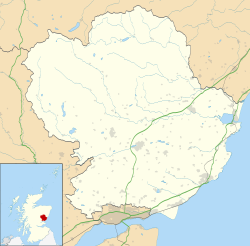| Ferryden | |
|---|---|
Location within Angus | |
| Area | 0.26 km2 (0.10 sq mi) |
| Population | 1,220 (2020) [1] |
| • Density | 4,692/km2 (12,150/sq mi) |
| Demonym | Ferrydenner |
| OS grid reference | NO7156 |
| Council area | |
| Lieutenancy area | |
| Country | Scotland |
| Sovereign state | United Kingdom |
| Post town | Montrose |
| Postcode district | DD10 |
| Police | Scotland |
| Fire | Scottish |
| Ambulance | Scottish |
| UK Parliament | |
| Scottish Parliament | |
Ferryden is a village in Angus, Scotland in the community council area of Ferryden & Craig. It lies southerly adjacent to the town of Montrose on the south bank of the South Esk and is considered a fringe locality of Montrose, being connected to the latter by the former Rossie Island, now home to shipping facilities and Montrose Port Authority.
Contents



